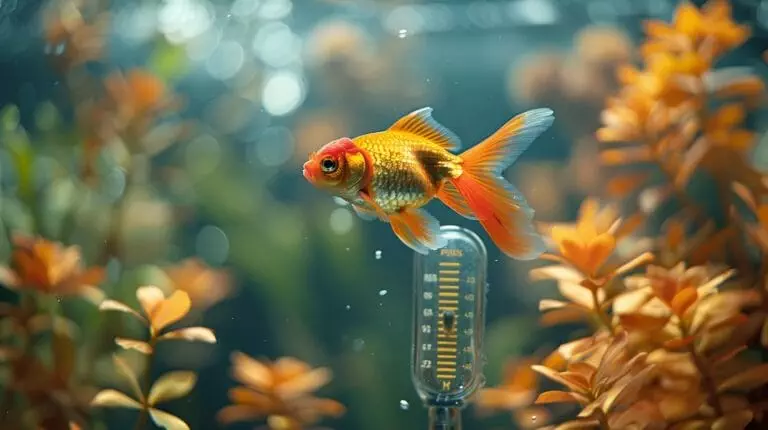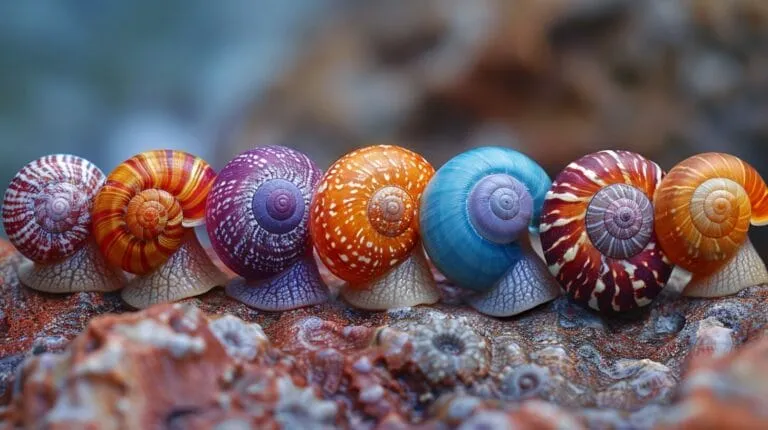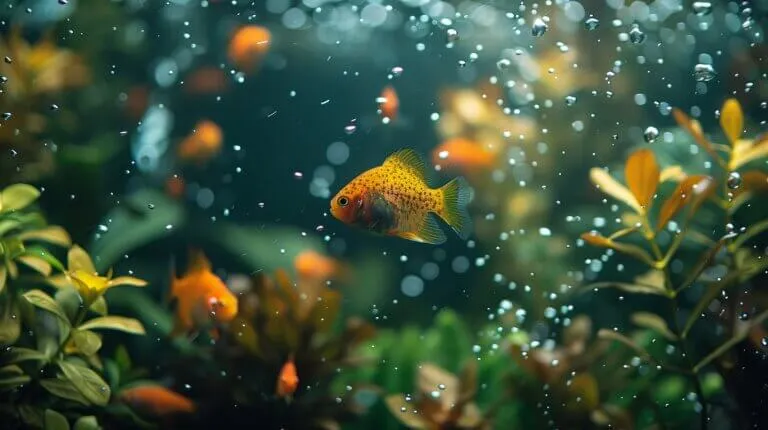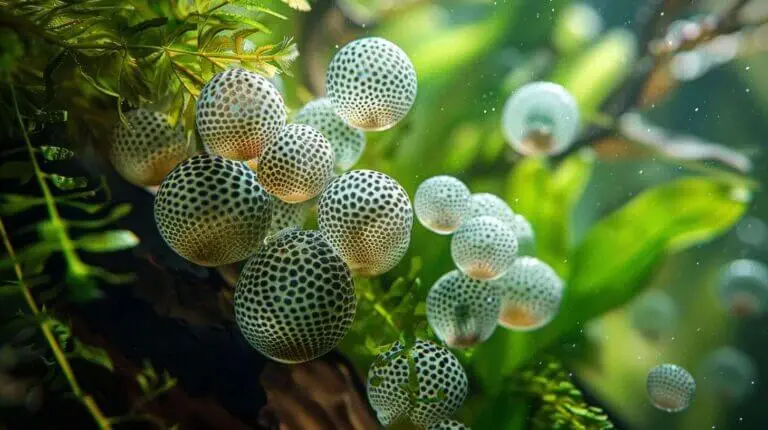When it comes to keeping your aquarium thriving, the question of what silicone is aquarium safe is crucial! Selecting the right silicone can mean the difference between a sparkling tank and a watery disaster. Using unsafe silicone can lead to leaky fish tanks, which can harm your aquatic friends and create a big mess in your home. Thankfully, knowing the ins and outs of safe silicone sealants can help you protect your tank and its inhabitants.
In this guide, we’ll explore everything you need to know about aquarium-safe silicone. You’ll learn how to choose the best products for your tank, the importance of proper application, and tips for maintaining your seals to prevent leaks. Plus, we’ll share some top brands and essential factors to consider. Get ready to ensure your aquatic environment remains safe and beautiful—let’s dive in!
Understanding Aquarium Safe Silicone

What is Aquarium Safe Silicone?
Aquarium safe silicone is a type of silicone sealant crafted to be safe for fish and other aquatic life. This silicone creates watertight seals in fish tanks while preventing harmful chemicals from leaking into the water. It is important for aquarium owners to choose products labeled as “aquarium safe” to ensure they do not contain biocides or other toxic additives. Common brands offering aquarium safe silicone include ASI, GE Silicone 1, Momentive RTV100, Selsil, and DAP silicone. These products help maintain a healthy environment for fish and other aquatic organisms by avoiding contamination in the tank.
Importance of Using the Right Silicone Sealant
Choosing the right silicone sealant is vital for the health of fish and other aquatic creatures. Non-aquarium safe silicones can release harmful substances into the water. This can cause serious health issues or even death for fish and other aquatic life. Therefore, aquarium owners must select silicone sealants specifically labeled as safe for aquatic environments. This guarantees that the sealant will not negatively impact the tank’s inhabitants, supporting a safe and stable habitat.
How Silicone Seals Are Relevant for Fish Tanks
Silicone seals are essential in aquariums because they prevent leaks and keep water contained. Over time, wear can cause seals to break down, resulting in leaks. Properly applied silicone can last many years, but regular inspections are crucial. Checking for signs of deterioration can help avoid unexpected leaks that might harm aquatic life or cause water damage. Maintaining silicone seals ensures that the aquarium’s integrity remains intact, creating a safe environment for all its residents.
Aquarium safe silicone is a critical component for maintaining healthy and leak-free fish tanks. By understanding the importance of selecting the right sealant and recognizing the role of silicone seals, aquarium owners can better protect their aquatic pets and ensure a stable living environment.
Citations
Choosing the Best Aquarium Safe Silicone for Your Tank

Selecting the best aquarium safe silicone is vital for creating a healthy home for fish and plants. The right silicone prevents leaks, which can cause serious problems in your tank. This section covers important factors to consider, suggests top brands, and explains how to read labels to identify safe products.
Factors to Consider When Selecting Silicone
When choosing silicone for your aquarium, consider these critical factors to ensure safety and effectiveness:
- Composition: Always choose silicone that is 100% pure without harmful additives. This prevents toxic chemicals from leaching into the water and harming aquatic life.
- Cure Time: Silicone products vary in curing times. Allow the silicone to cure completely before filling the tank. A longer cure time usually results in a stronger bond.
- Flexibility: The silicone must stay flexible after curing. This flexibility accommodates movements and temperature changes in the aquarium.
- Brand Reputation: Opt for well-known and trusted brands. Research customer reviews to gauge a brand’s reliability.
Top Recommended Brands for Aquarium Safe Silicone
Several brands are recognized for producing quality aquarium safe silicone sealants. Here are three top recommendations:
- ASI Black Aquarium Silicone Sealant: This popular product features medium modulus and acetic cure, making it suitable for both freshwater and saltwater tanks.
- APEL AS700 Aquarium 100% Silicone Sealant: This non-toxic sealant contains no harmful additives or fungicides, ensuring safety for all aquatic life.
- Silicone Aquarium Sealant – Clear: This clear silicone remains flexible over time, making it ideal for both freshwater and saltwater applications.
These brands are praised for their quality and commitment to safety in aquarium settings.
How to Read Labels: Identifying Safe Products
Correctly reading labels is essential for finding aquarium safe silicone. Focus on these key aspects:
- 100% Silicone: Ensure the label states it contains 100% silicone, confirming no harmful fillers.
- Non-toxic: Look for a mark indicating the product is non-toxic or safe for aquatic life. This ensures it won’t leach harmful substances into the water.
- Aquarium Safe Certification: Some products may feature certifications from aquatic organizations, further assuring their safety for fish tanks.
How to Apply Aquarium Safe Silicone Sealant

Step-by-Step Guide to Applying Silicone Sealant
To ensure your aquarium remains leak-proof, proper silicone sealant application is essential. This guide outlines the steps for effective application.
- Preparation:
- Clean the surfaces that need sealing. Remove any old silicone, dirt, or debris to provide a clean area for the new silicone to adhere well.
- Application:
- Use a caulk gun to apply a continuous bead of aquarium safe silicone along the joint or gap. Aim for a uniform bead size of about 1/4 inch to create a strong seal.
- Smoothing:
- Smooth the silicone with a wet finger or smoothing tool. This step ensures a tight seal and removes air bubbles that could weaken the bond.
- Curing:
- Follow the manufacturer’s instructions for curing time. Typically, wait at least 24 hours before filling the tank with water to allow the silicone to cure fully.
Tips for a Proper Application to Prevent Leaks
Keep these tips in mind for optimal results when applying aquarium safe silicone sealant:
- Clean and Dry Surfaces: Ensure all surfaces are free from moisture and contaminants. This promotes better adhesion and prevents leaks.
- Generous Application: Apply enough silicone to fill all gaps and joints. A thicker bead can help prevent leaks effectively.
- Curing Time: Be patient and allow the silicone to cure fully, as specified by the manufacturer. Rushing this step can lead to future leaks.
Common Mistakes to Avoid When Sealing Your Tank
Prevent leaks and ensure a secure seal by avoiding these common mistakes:
- Using Non-Aquarium Safe Silicone: Always choose silicone labeled as aquarium safe. Many common products contain harmful additives that can affect aquatic life.
- Insufficient Curing Time: Filling the tank too soon can compromise the seal and lead to leaks. Always wait for the recommended curing period.
- Applying in Poor Conditions: Avoid applying silicone in wet or dirty conditions. Moisture and dirt can hinder adhesion and result in a weak seal.
Maintaining Your Aquarium After Applying Silicone

After applying aquarium-safe silicone, following specific steps ensures the tank remains safe and functional. This section outlines the waiting period before filling the tank, how to monitor for leaks, long-term maintenance tips, and examples of successful repairs.
How Long Should You Wait Before Filling Your Tank?
Waiting for silicone to cure is crucial before adding water to the tank. Most experts recommend a waiting period of 24 to 48 hours after application. This time allows the silicone to bond properly, reducing the chance of leaks. Factors like humidity and temperature can influence curing time, so it’s best to follow the manufacturer’s guidelines.
Monitoring Your Tank for Leaks After Resealing
After filling the tank, monitoring for leaks is essential, especially during the first few weeks. Here are steps to effectively check for leaks:
- Inspect Seams and Corners: Focus on the corners and seams since they are common leak points.
- Look for Water Pooling: Check the area around the tank for any signs of pooling water, which may indicate a leak.
- Check Water Levels: Regularly observe the water level. A noticeable drop without an explanation could signal a leak.
- Perform Regular Inspections: Develop a habit of inspecting the tank weekly for several weeks after resealing to catch potential issues early.
Long-term Maintenance Tips for Silicone Seals
Maintaining silicone seals is vital for the tank’s longevity and the safety of aquatic life. Here are some important tips:
- Regular Inspections: Examine silicone seals at least once a month for wear or degradation. Look for cracks or discoloration.
- Clean Carefully: When cleaning, avoid harsh chemicals that can damage the silicone. Use a soft cloth or sponge with warm water.
- Gently Remove Algae: If algae build up on the silicone, use a gentle scrubbing method to avoid removing the silicone itself, like an algae scraper.
- Replace Damaged Seals: If any silicone appears damaged, replace it promptly to prevent more significant problems later.
Case Studies: Successful Repairs Using Aquarium Safe Silicone
Various case studies illustrate the effectiveness of aquarium-safe silicone for repairs:
- Community Aquarium Project: In a community aquarium project, a team used aquarium-safe silicone to fix a leaking seam in a large tank. After following proper curing times and monitoring for leaks, the repair lasted over two years without issues. This project demonstrated the importance of using quality materials and techniques for durable repairs.
- Home Aquarist: A home aquarist dealt with a cracked corner in their glass tank. They applied a trusted brand of aquarium-safe silicone and waited the recommended 48 hours. After filling the tank, they checked for leaks and found none. This repair has lasted over five years, showcasing the reliability of quality aquarium-safe silicone.
These examples confirm that with proper application and maintenance, aquarium-safe silicone can effectively repair tanks, ensuring a safe environment for aquatic life.
Conclusion
In this guide, we learned that aquarium safe silicone is essential for keeping your fish tank healthy and leak-free. It’s important to choose the right silicone sealant, as using the wrong type can harm your aquatic friends. We also discussed how to properly apply the silicone to prevent leaks and ensure a strong bond with your tank.
Now that you’re equipped with this knowledge, you can confidently tackle any silicone project for your aquarium! Remember to check your seals regularly and keep your tank in top shape. Dive into more exciting aquarium care topics and become a true fish-keeping expert!
FAQs
1. What are the risks of using non-aquarium safe silicone?
Using non-aquarium safe silicone poses significant risks to aquatic life. These silicones often contain harmful additives that can leach into the water, causing serious health issues for fish and other aquatic organisms. Symptoms of exposure may include stress, illness, or even death. Therefore, it is vital to choose silicone that is specifically labeled as aquarium safe to protect the health of the aquatic environment.
2. How often should aquarium seals be checked?
Aquarium seals should be checked every few months. Regular inspections help identify potential issues early. Additionally, checks should occur after significant temperature changes or physical disturbances, such as moving decorations or equipment. Taking a proactive approach ensures any wear or damage is addressed before leaks develop.
3. Can aquarium safe silicone be used for other purposes?
Aquarium safe silicone is versatile, but it is best to reserve it for projects where aquatic safety is a concern. While it can be used for household repairs, consider the specific application. In non-aquarium environments, other types of silicone may be more appropriate and cost-effective. Always prioritize the intended use to ensure safety and effectiveness.
4. What are the signs of a leaky fish tank?
Common signs of a leaky fish tank include:
- Visible water on the outside of the tank
- Dampness around the aquarium’s base or floor
- Noticeable drops in water levels inside the tank
If any of these signs appear, it is crucial to inspect the seals and resolve any leaks promptly. This action helps maintain a stable environment for fish and plants.






